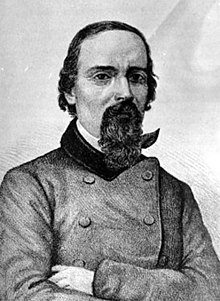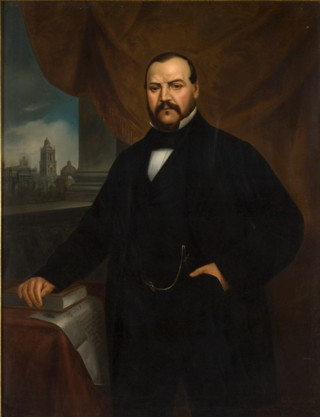
Ignacio Gregorio Comonfort de los Ríos, known as Ignacio Comonfort, was a Mexican politician and soldier who was also president during La Reforma.

Liberalism in Mexico was part of a broader nineteenth-century political trend affecting Western Europe and the Americas, including the United States, that challenged entrenched power. In Mexico, liberalism sought to make fundamental the equality of individuals before the law, rather than their benefiting from special privileges of corporate entities, especially the Roman Catholic Church, the military, and indigenous communities. Liberalism viewed universal, free, secular education as the means to transform Mexico's citizenry. Early nineteenth-century liberals promoted the idea of economic development in the overwhelmingly rural country where much land was owned by the Catholic Church and held in common by indigenous communities to create a large class of yeoman farmers. Liberals passed a series of individual Reform laws and then wrote a new constitution in 1857 to give full force to the changes. Liberalism in Mexico "was not only a political philosophy of republicanism but a package including democratic social values, free enterprise, a legal bundle of civil rights to protect individualism, and a group consciousness of nationalism." Mexican liberalism is most closely associated with anticlericalism. Mexican liberals looked to the U.S. as their model for development and actively sought the support of the U.S., while Mexican conservatives looked to Europe.

Juan Nepomuceno Álvarez Hurtado de Luna, generally known as Juan Álvarez, was a general, long-time caudillo in southern Mexico, and president of Mexico for two months in 1855, following the liberals' ouster of Antonio López de Santa Anna. His presidency inaugurated the pivotal era of La Reforma.
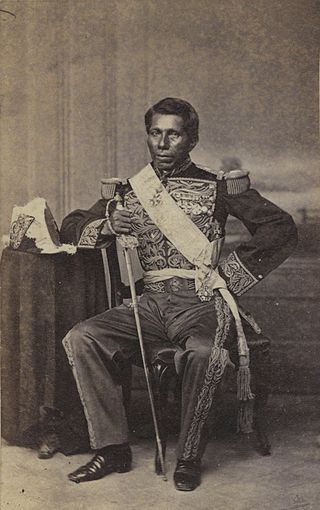
José Tomás de la Luz Mejía Camacho, better known as Tomás Mejía, was a Mexican soldier of Otomi background, who consistently sided with the Conservative Party throughout its nineteenth century conflicts with the Liberals.

In the history of Mexico, La Reforma, or reform laws, refers to a pivotal set of laws, including a new constitution, that were enacted in the Second Federal Republic of Mexico during the 1850s after the Plan of Ayutla overthrew the dictatorship of Santa Anna. They were intended as modernizing measures: social, political, and economic, aimed at undermining the traditional power of the Catholic Church and the army. The reforms sought separation of church and state, equality before the law, and economic development. These anticlerical laws were enacted in the Second Mexican Republic between 1855 and 1863, during the governments of Juan Álvarez, Ignacio Comonfort and Benito Juárez. The laws also limited the ability of Catholic Church and Indigenous communities from collectively holding land. The liberal government sought the revenues from the disentailment of church property, which could fund the civil war against Mexican conservatives and to broaden the base of property ownership in Mexico and encouraging private enterprise. Several of them were raised to constitutional status by the constituent Congress that drafted the liberal Constitution of 1857. Although the laws had a major impact on the Catholic Church in Mexico, liberal proponents were not opposed to the church as a spiritual institution, but rather sought a secular state and a society not dominated by religion.
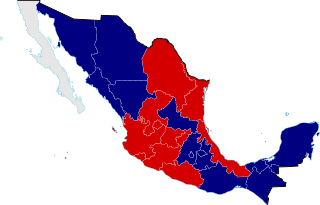
The Reform War, or War of Reform, also known as the Three Years' War, and the Mexican Civil War, was a complex civil conflict in Mexico fought between Mexican liberals and conservatives with regional variations over the promulgation of Constitution of 1857. It has been called the "worst civil war to hit Mexico between the War of Independence of 1810–21 and the Revolution of 1910–20". Following the liberals' overthrow of the dictatorship of conservative Antonio López de Santa Anna, liberals passed a series of laws codifying their political program. These laws were incorporated into the new constitution. It aimed to limit the political power of the executive branch, as well as the political, economic, and cultural power of the Catholic Church. Specific measures were the expropriation of Church property; separation of church and state; reduction of the power of the Mexican Army by elimination of their special privileges; strengthening the secular state through public education; and measures to develop the nation economically.

The Plan of Ayutla was the 1854 written plan aimed at removing conservative, centralist President Antonio López de Santa Anna from control of Mexico during the Second Federal Republic of Mexico period. Initially, it seemed little different from other political plans of the era, but it is considered to be the first act of the Liberal Reform in Mexico. It was the catalyst for revolts in many parts of Mexico, which led to the resignation of Santa Anna from the presidency, never to vie for office again. The next Presidents of Mexico were the liberals, Juan Álvarez, Ignacio Comonfort, and Benito Juárez. The new regime would then proclaim the 1857 Mexican Constitution, which implemented a variety of liberal reforms.

Vicente Florencio Carlos Riva Palacio Guerrero better known as Vicente Riva Palacio was a Mexican liberal politician, novelist, journalist, intellectual, historian, and military leader.

Juan Ignacio Paulino Ramírez Calzada, more commonly known as Ignacio Ramírez, was a 19th century Mexican liberal intellectual and statesman. He was known for publishing various newspapers championing progressive causes, and he would often use the pen name El Nigromante,. He served in more than one presidential cabinet and would go on to become president of the supreme court.

The Political Constitution of the Mexican Republic of 1857, often called simply the Constitution of 1857, was the liberal constitution promulgated in 1857 by Constituent Congress of Mexico during the presidency of Ignacio Comonfort. Ratified on February 5, 1857, the constitution established individual rights, including universal male suffrage, and others such as freedom of speech, freedom of conscience, freedom of the press, freedom of assembly, and the right to bear arms. It also reaffirmed the abolition of slavery, debtors' prisons, and all forms of cruel and unusual punishment such as the death penalty. The constitution was designed to guarantee a limited central government by federalism and created a strong national congress, an independent judiciary, and a small executive to prevent a dictatorship. Liberal ideals meant the constitution emphasized private property of individuals and sought to abolish common ownership by corporate entities, mainly the Catholic Church and indigenous communities, incorporating the legal thrust of the Lerdo Law into the constitution.
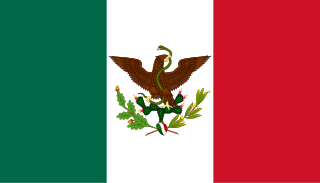
The Second Federal Republic of Mexico refers to the period of Mexican history involving a second attempt to establish a federal government in Mexico after the fall of the unitary Centralist Republic of Mexico in 1846 at the start of the Mexican-American War. It would last up until the Second French Intervention in Mexico led to the proclamation of the Second Mexican Empire in 1863.
The Liberal Party was a loosely organised political party in Mexico from 1822 to 1911. Strongly influenced by French Revolutionary thought, and the republican institutions of the United States, it championed the principles of 19th-century liberalism, and promoted republicanism, federalism, and anti-clericalism. They were opposed by, and fought several civil wars against, the Conservative Party.

The Battle of Acapulco were a series of battles during the Second French intervention in Mexico. Acapulco was a key port of the Pacific trade routes and thus changed hands several times in the course of the Franco-Mexican war. In this period the population of the city had decreased from 6000 to 2000.
Events in the year 1862 in Mexico.
Events in the year 1863 in Mexico.

Carlos Benito Salazar Ruiz (1829-1864) was a Mexican General, martyr of Uruapan and the son of Captain Benito Salazar Vargas and Mercedes Ruiz Castañeda. He is notable for his participation in several revolutions and battles during 19th-century Mexico.
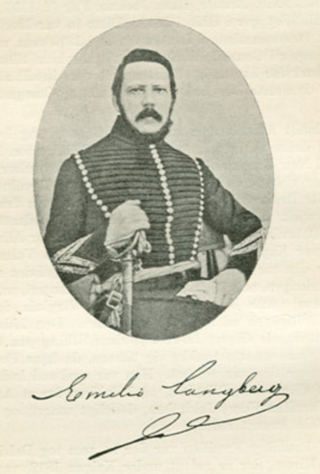
Edvard Emile Langberg (1810-1866) also known in Spanish as Emilio Langberg was a Danish-Mexican general who served in Mexico's military during the mid 19th-Century. He participated in the various coups that the government experienced in the era, and defended his adopted country during the Mexican American War. During the War of Reform, he fought on the side of the liberals, and during the Second French Intervention in Mexico he joined the Second Mexican Empire and was eventually killed in action during the Battle of Guadeloupe in Ures, Sonora.

José Miguel Pascual Negrete Novoa, commonly known as Miguel Negrete was a 19th-century Mexican Major General. He participated in the many Mexican Civil Wars, as well as the Mexican–American War and the Second French intervention in Mexico. Negrete was also the Governor of Puebla from October 13, 1863, to November 4, 1863, and the Minister of War and Navy of Mexico from March 16, 1864 to August 23, 1865.

Pedro Ogazón Rubio was a Mexican military officer and politician. He served as the governor of Jalisco, Minister of War, a local and federal deputy, and a magistrate of the Supreme Court of Justice.
